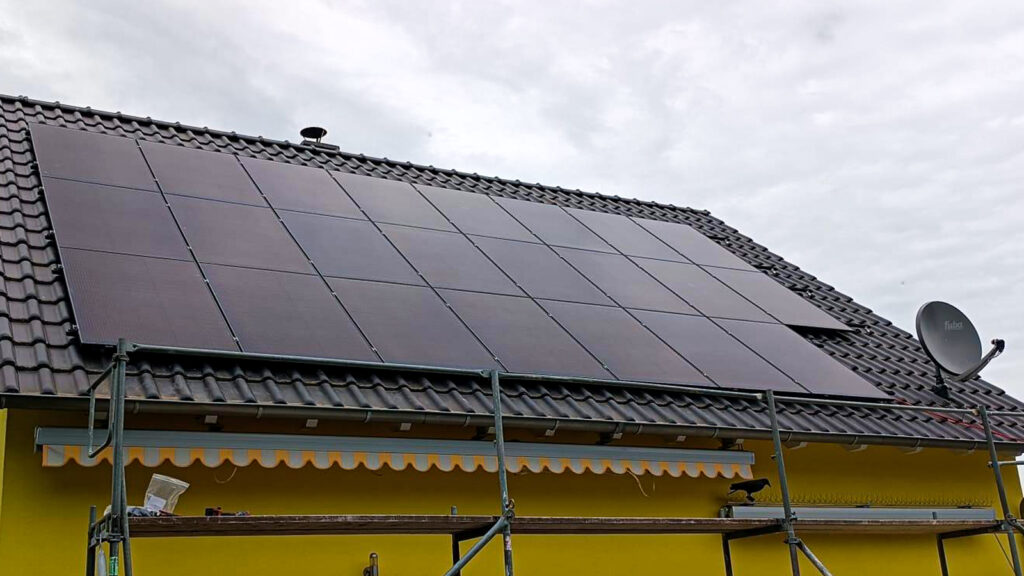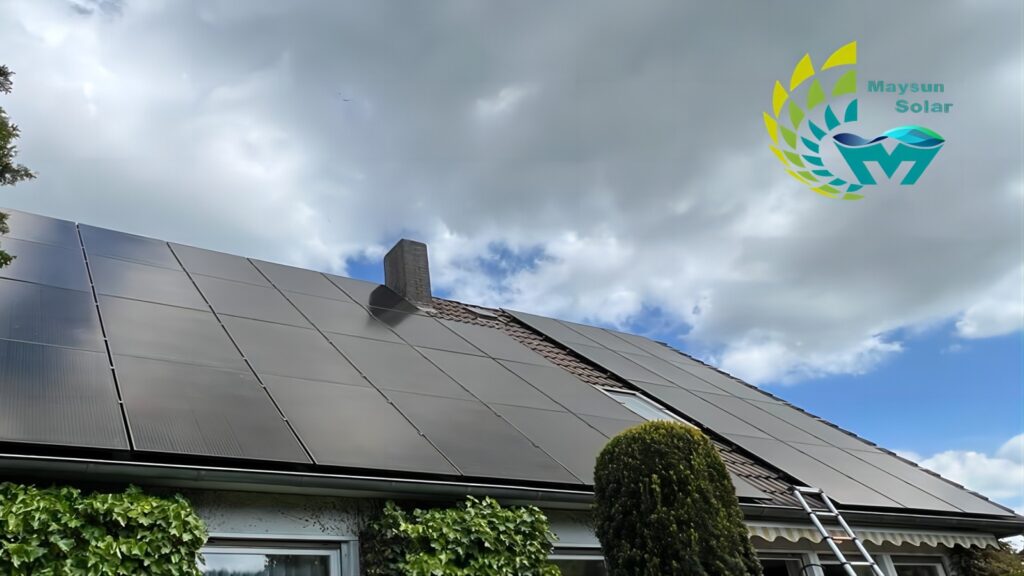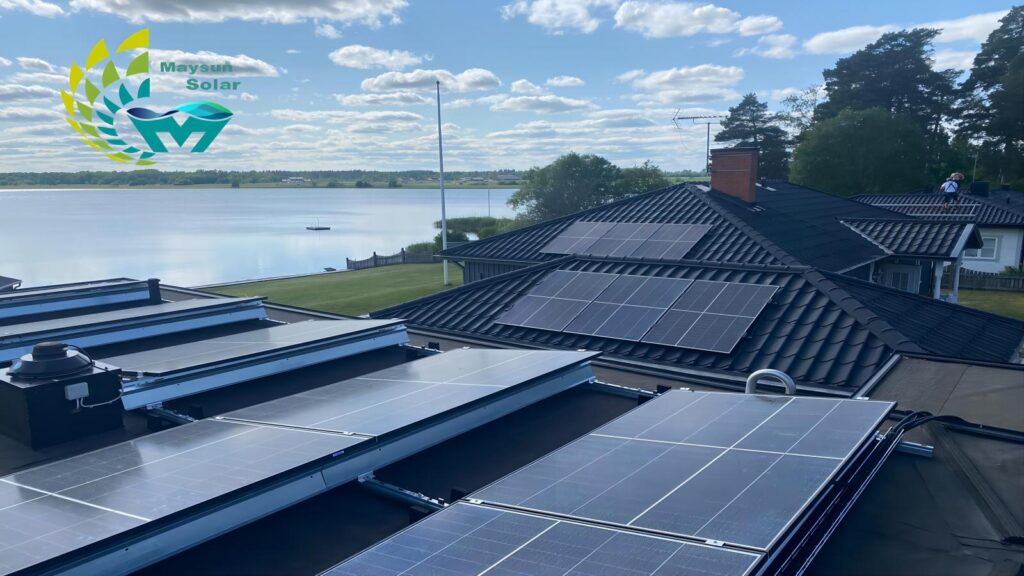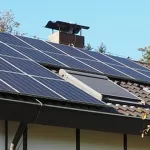With the rise of renewable energy, solar energy has attracted much attention as a clean and sustainable form of energy. Traditional blue solar panels are functional but somewhat drab in appearance. In recent years, however, black solar panels have been a popular mainstream product in Europe, especially the Nordics. Do you know why?
Before discussing this reason, we must first clarify the difference between monocrystalline and polysilicon panels:
Polycrystalline panels are less efficient because some crystals form during the manufacturing process. These crystals make it harder for electrons to flow through the cell. On the other hand, the lack of crystal formation in mono PERC panels allows electrons to flow easily, making these panels more efficient. Because they are more efficient, they are also more expensive. Also, monocrystalline panels are darker in color, while polycrystalline panels have a traditional blue color.
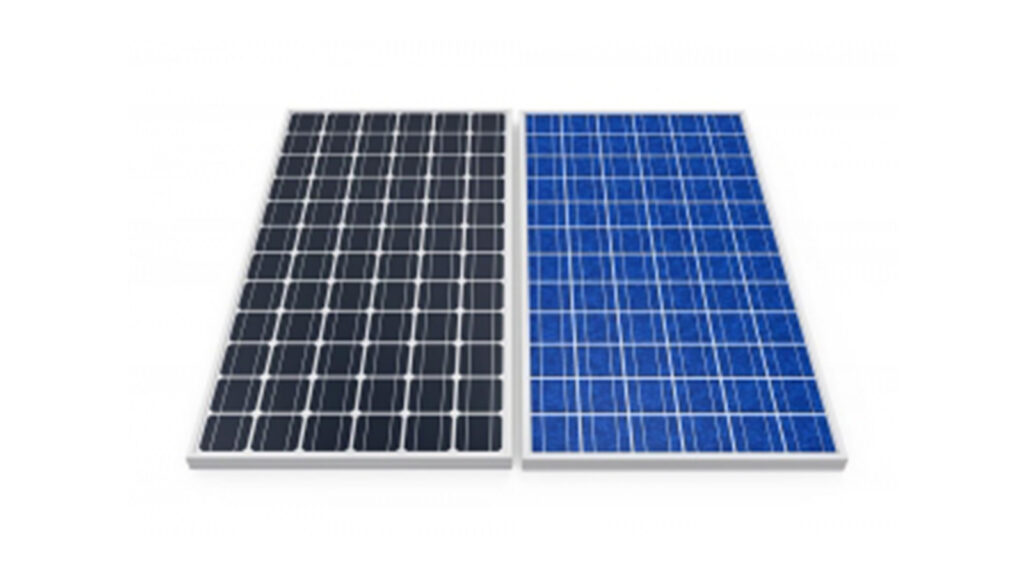
While traditional monocrystalline panels still use black solar panels with white backsheets. Below you can see the difference. The image on the left shows a traditional monocrystalline silicon panel up close. The photo on the right shows the entire array panel with the black sheet, which is full black solar panel.
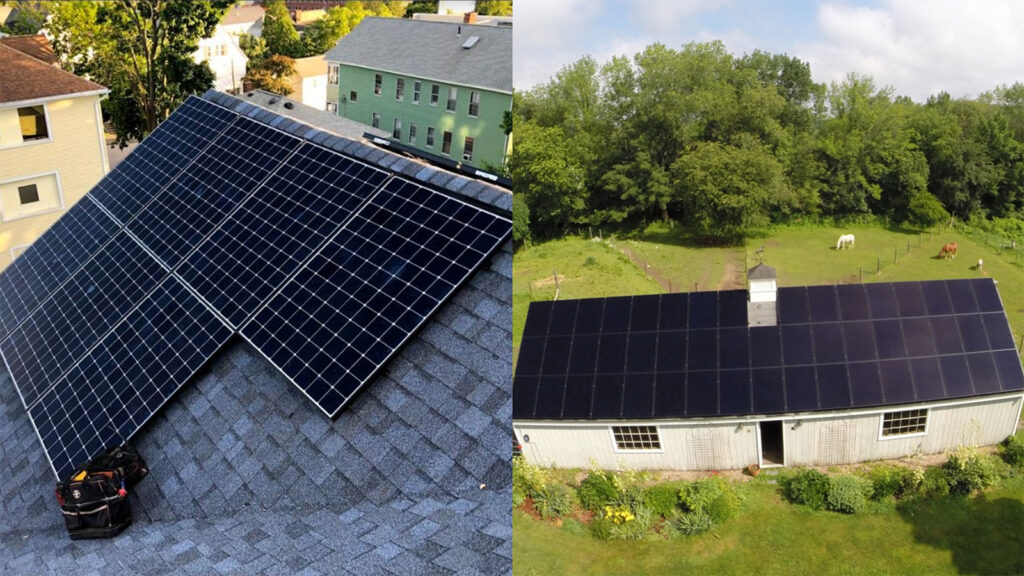
Advantages of black (monocrystalline) solar panels over polycrystalline solar panels (blue):
Higher efficiency:
In terms of solar panel efficiency, the alignment of silicon crystals makes solar panels more efficient. When installing solar panels, less black solar panels are generally required than blue solar panels, and they will produce the same amount of solar energy, making black solar panels a more viable option for saving space.
absorb more light:
In addition to solar panels being more efficient, black solar panels absorb more sunlight than other types of solar panels. This means that black solar panels are more capable of absorbing more sunlight, which means they will generate more solar energy.
More heat resistant:
Monocrystalline solar panels perform better at high temperatures. In the case of solar cells, the amount of solar power produced decreases as the temperature rises. However, a black solar panel will experience less attenuation of solar output than other types of solar panels.
More beautiful:
For some architectural projects or design styles, black solar panels can provide higher aesthetic requirements. For architects and homeowners who care about appearance and design, black solar panels are a better choice because they are more in harmony with the overall appearance of the building.
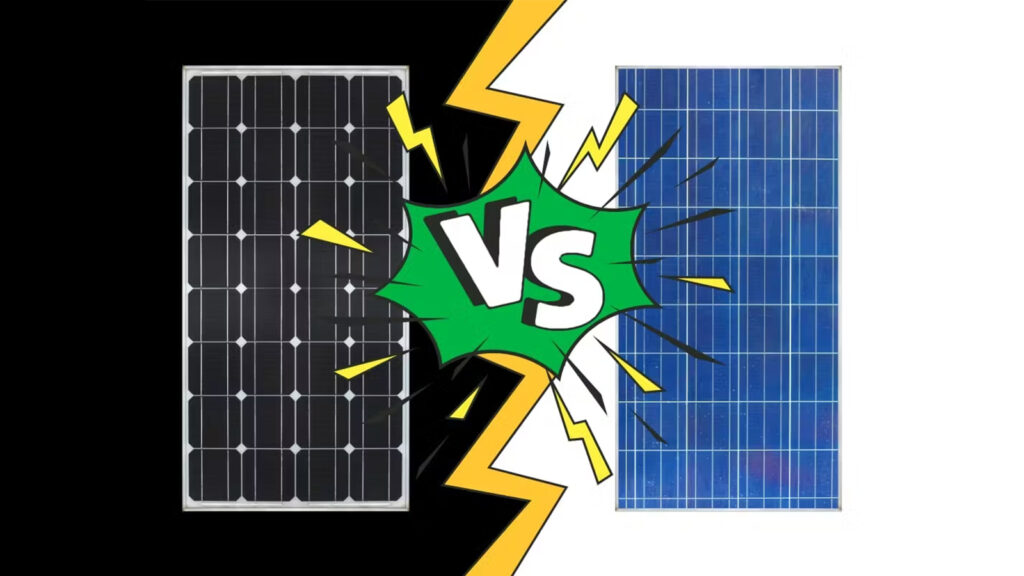
Application fields of black solar panels:
Building exterior wall:
black panels can be used as a part of the building exterior wall to add a unique visual effect to the building. This application method not only realizes the utilization of energy, but also endows buildings with more functions and aesthetic feeling.
Building roof:
black solar panels can be mounted on roofs to provide electrical support for homes and commercial buildings. Compared with traditional solar panels, the black solar panels are better integrated into the overall design of the building, making the roof no longer just a functional area.
Car roof:
With the popularity of electric vehicles, black solar panels can be applied to the roof of the car to provide additional power supply for electric vehicles, extend the driving range, and reduce dependence on traditional energy sources.
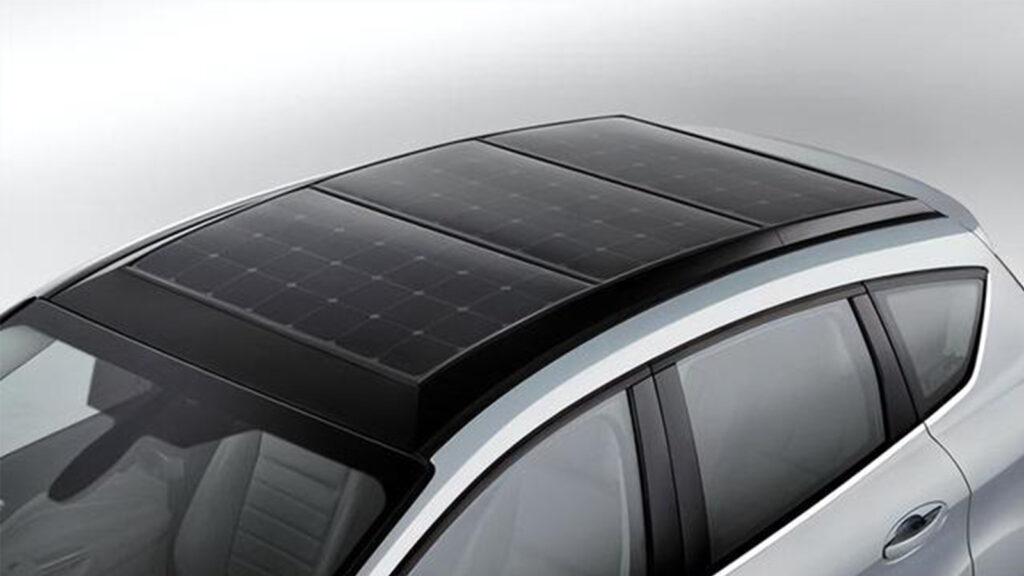
Our company offers a wide selection of photovoltaic panels, including a large number of all black and black frame designs. These photovoltaic panels not only have high-efficiency energy conversion capabilities, but also exhibit an outstanding design. Whether in building-integrated projects or high-end market needs, our photovoltaic panels can meet customer requirements and provide customers with reliable, high-quality solar energy solutions.

How Businesses Can Offset Carbon Taxes with Solar Power
This article analyzes the latest carbon tax policies and photovoltaic deduction strategies, helping European businesses legally reduce taxes, increase profits through solar investment, and achieve a win-win situation for both economy and environment.

Forecast and Response: Seizing the Next Decade’s Growth Dividend in Europe’s Commercial and Industrial Photovoltaics Market
Maysun Solar analyzes the growth trends of commercial and industrial photovoltaics in Europe over the next ten years, from policies and ESG to technological innovation, helping companies seize the initiative in the energy transition.

How to Calculate Solar System ROI and Optimize Long-Term Returns?
Solar power is becoming a key solution for businesses to reduce costs and improve efficiency. Accurately calculating ROI and optimizing long-term returns are essential to maximizing investment value.

Will Agrivoltaics Affect Crop Growth?
Agrivoltaics combines solar energy and agriculture to reduce up to 700 tons of CO₂ per MW, improve water use, and boost crop growth for sustainable farming.

6.5 Billion Loss Hits Photovoltaics: Reshaping or Elimination?
In 2025, the photovoltaic market may see a turnaround as some companies take early action. A €6.5 billion loss is driving businesses to explore new growth areas like energy storage and hydrogen. Which giants will break through? Industry transformation is accelerating!

What’s New in Solar Energy (March 2025)
March’s solar news highlights include rooftop solar meeting two-thirds of global demand, China’s market reforms potentially boosting solar demand and module prices, France revising solar targets in PPE 3, and challenges in Europe with declining capture rates and price volatility.

